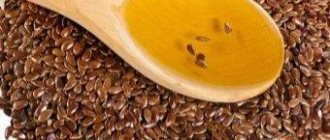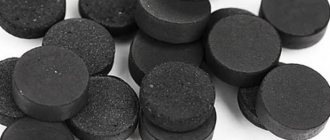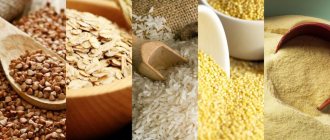The benefits of butter
Butter contains a large amount of vitamins and microelements necessary to maintain health. The content of vitamins such as A, E, D, as well as healthy fats and cholesterol gives the product great value. Made from natural ingredients, it has a beneficial effect on the body:
- supports the immune system;
- allows you to maintain your vision at the proper level;
- helps the functioning of the vascular system;
- keeps the skin looking beautiful;
- promotes the production of hormones necessary for the body;
- strengthens the hair structure;
- removes waste and toxins from the body;
- supports thyroid function;
- prevents cancer;
- has a beneficial effect on the functioning of the gastrointestinal tract.
Due to the content of vitamins and healthy cholesterol, it is easily absorbed and digested by the human body.
Is it possible to use butter while breastfeeding?
Many mothers worry whether butter can be used during breastfeeding. In small quantities, its use is even beneficial for a nursing mother. It helps milk to be produced in the required quantities. If it is present in the diet of a nursing mother, it will contribute to the full development of the baby.
Important! If a child has an allergic reaction to cow protein, then butter should be excluded from the diet.
If the baby does not have negative reactions to dairy products, then butter, on the contrary, is indicated for consumption, as it contains healthy fats and vitamins that help strengthen the immune and nervous system involved in the development of the baby.
Is it possible for a nursing woman to use butter in the first month of giving birth? It is in the first month that the baby actively adapts to the new environment and the process of developing important life functions. Moderate consumption will supply milk with valuable vitamins and microelements that help the baby develop fully.

Types of vegetable oil, recommendations for nursing mothers
People often resort to using vegetable oils in cooking. For nursing mothers, pediatricians do not strictly prohibit the use of oil. Natural vegetable oil contains vitamins and polyunsaturated fatty acids Omega-3 and Omega-6, which have a positive effect on weight, height, the state of the peripheral nervous system, mental reflexes, brain development, and increase the protective reactions of the developing organism.
There are many types of unique vegetable oils: olive, sunflower, flaxseed, palm, corn, sea buckthorn, walnut, sesame, soybean and others.
The most popular are sunflower and olive oils; they are the most accessible and are successfully used for cooking and improving the taste and quality of food without the risk of obesity.
Sunflower oil, a product familiar from childhood, comes in three grades (highest, first and second) and has five varieties, which depend on the production methods:
- Raw, unrefined , first-press product with the preservation of almost all vitamins and nutrients.
- Hydrated , when water is passed through heated oil to clarify and precipitate mucus fractions, followed by their removal.
- Neutralized, refined , with complete purification from impurities.
- Refined, deodorized , purified and devoid of characteristic aromatic substances.
- Frozen, refined , when after hot processing and purification, wax-like substances are also removed under freezing conditions. This oil is devoid of both aroma and taste, but has a long shelf life.
The healthiest thing on this list is raw, unrefined premium oil, obtained by pressing high-quality environmentally friendly seeds.
It is sold in transparent glass containers, has a short shelf life of only one month and is ideal for use in a purely natural form, as additives and dressings for prepared foods. Hot processing of raw unrefined oil will provoke the accumulation of harmful carcinogenic substances in it.
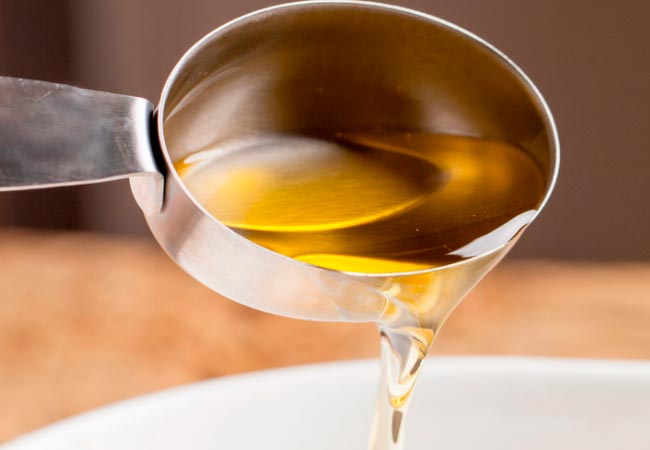
Possible harm
Any product, if used carelessly, can be harmful. Butter is high in calories, so consuming it in excess can harm the body in the following ways:
- Blood glucose levels increase.
- Body weight begins to increase.
- Disturbances in the gastrointestinal tract of the newborn may occur.
Oil contains not only healthy cholesterol, but also unhealthy cholesterol. And its excess in the body leads to diseases of the cardiovascular system. Also, excess feeding of a newborn leads to an allergic reaction in half of the infants. This is especially observed in the first months of a newborn’s life.
What is not allowed and why
First of all, the group of potentially dangerous products for babies includes:
- Bitter dark chocolate (the one with about 70% cocoa) is a strong allergen. According to some pediatricians, you can try to introduce milk or white chocolate into your diet from 3 to 6 months, but it is important to be prepared for an allergic reaction.
- Seafood, some types of fish and caviar are the first to accumulate heavy metals. Caviar may be of poor quality and cause poisoning. Shrimp are an allergen. Among the fish that cause allergies are mackerel, tuna, and red fish.
- Raw vegetables are prohibited in the first two months, especially store-bought ones, as they can cause poisoning. In addition, they improve intestinal motility and cause bloating.
- Citrus fruits and exotic fruits are allergens that are allowed only after 3 months, and they must be administered in slices. What fruits and berries are still dangerous? Grapes and plums, apricots, if the baby is swelling.
- Watermelons - they can be poisonous.
- Semi-finished products, sausages, smoked foods, fatty broths, pickles - cause colic in the baby.
- Mustard, horseradish, hot peppers, garlic, hot sauces, onions (not to be confused with green feathers) - cause heartburn in the mother, abdominal pain in the newborn, and change the taste and smell of milk. If you really want to, they can be introduced no earlier than 6 months.
- Blue cheeses can cause poisoning.
- Black strong coffee and tea cause anxiety in a child.
- Any alcohol.
When planning your diet, remember that nutrition during lactation is not a test, but an investment in the health of your child. Do it now, and in the future he will appreciate your efforts.
Contraindications for use
There are situations when even the healthiest product should be excluded from the diet. Contraindications to the use of butter for a nursing mother are:
- allergic reactions to dairy products in the mother or baby;
- chronic increase in blood glucose levels;
- diseases of the cardiovascular system;
- tendency to obesity.
If you have chronic diseases of the liver, kidneys, or blood vessels, then it is better to stop eating butter and replace it with vegetable oil.
People trying to lose weight should exclude creamy products from their diet due to their high calorie content. Its excess in the body leads to disruption of the gastrointestinal tract.

Butter is considered a high-calorie product
Impact on newborn development
Natural olive oil is of particular value for premature babies, whose bodies are weakened and not fully formed. This is due to the fact that the oil contains vitamin E. Oleic acid, which is part of this product, stimulates the mineralization of the bones of a newborn child and prevents the formation of atherosclerotic changes in the future.
Olive oil is recommended for daily use by nursing mothers whose children suffer from congenital pathologies of the liver, kidneys and pancreas.
A sufficient supply of vitamin E through breast milk ensures the harmonious development of all organs and systems of the newborn baby. When a nursing mother consumes olive oil, vitamin E accumulates in breast milk, which enters the baby's body during breastfeeding.
The human brain needs the nutrients that olive oil contains. The use of this product during lactation provides the newborn’s body with substances that stimulate the growth and development of the brain and retina.
Rules for using oil during lactation
In order for the product to benefit the body and not harm the baby, the oil should be consumed correctly during lactation. Not to be used as a separate product. It is added to side dishes: pasta, potato products, porridge. Many people use it for sandwiches.
Attention! The maximum daily dose for a nursing woman is no more than 30 grams.
It is not recommended to use it for frying foods, as this increases the calorie content. Due to high temperatures during frying, the entire value of the product is lost, leaving only a negative effect on the body.
A good option for a nursing mother would be to add it to cereals, potatoes, and pasta. Also, young mothers like to use the product with rye, wheat or bran bread as sandwiches.
During lactation, it is recommended to introduce it gradually in order to see the baby’s reaction to the new product in time. A good option to check your child's reaction to the product would be a sandwich with butter in the morning. During the day, the mother will be able to see negative manifestations in the child.
You can start introducing butter into your diet while breastfeeding almost immediately. You should start with 3-4 grams, gradually increasing the dosage if there is no negative reaction.
Which fat content should you choose?
In the modern age, on store shelves there is a multiple assortment of butters of varying fat content. A product made from natural ingredients will have a fat content of 72.5% to 82.5%. If this indicator is lower or higher, then such a product cannot be called natural and should not be chosen.
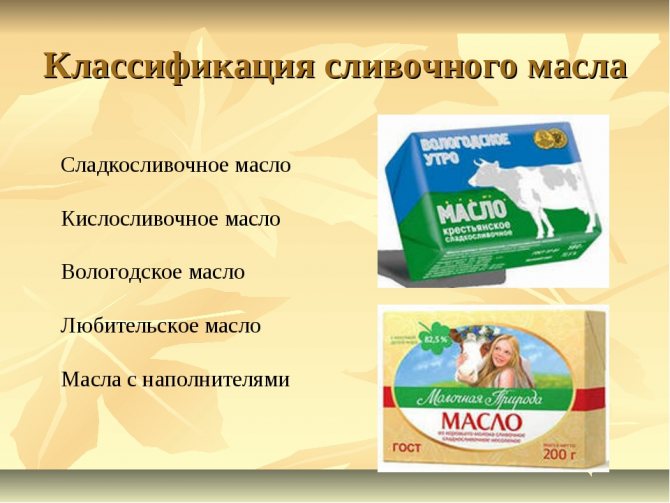
Norms
As previously mentioned, nursing mothers can, and even should, include butter in their diet in moderation. But how to determine this amount? Studies have shown that the creamy product does not affect the quality and fat content of breast milk, but moderation in its use should be observed.
The minimum dose per day for an adult is 10 grams, but not more than 30 grams. When feeding an infant, the best option is the minimum dose. It should be introduced into your diet gradually, starting with 3-4 grams, carefully observing the newborn’s reaction.
Methods of introduction into the diet
Of course, the young mother herself chooses the method of consumption, but there are preferable options:
- Add to pasta, potato products and cereals.
- Use for baking.
- Spread on bread as a sandwich.
Only a mother can determine how to eat butter while breastfeeding. However, it is not recommended to use it for frying meat and fish, as the calorie content of the product increases and harmful cholesterol is released.
If your baby has an allergic reaction, you can try replacing it with baked milk.
What can you eat
For your convenience, a table is provided that includes permitted foods during breastfeeding.
| Product | Explanation |
| Meat | This is protein. Lean varieties of young beef, rabbit, turkey, domestic chicken, chicken liver, and lean pork several months after childbirth are suitable. They can be baked, boiled or stewed. |
| Fish | Choose low-fat types of river and sea fish. As a rule, they start with hake and pollock, subsequently adding pike perch and carp. They are baked and steamed. Consume twice a week, avoiding meat on these days. |
| Dairy and fermented milk products | You need to eat them daily. When choosing, you should pay special attention to fat content. The permissible limit for milk is 2.5% - no higher and no lower. Drink no more than 200 ml per day. Yoghurts without fruit additives are allowed in quantities of no more than 600 - 800 ml per day. Mild cheese and cottage cheese with a fat content of 5–9% are healthy. When using the latter daily, it is important to monitor the baby’s fontanel, making sure that it does not close quickly. In the first month, many pediatricians recommend avoiding cow's milk. |
| Vegetables | Pumpkin, zucchini, dill, and parsley are allowed a couple of weeks after birth. It is recommended to introduce carrots and beets at 3 months, consuming them boiled or baked; the main thing is to monitor the baby’s reaction, because beets can weaken. Potatoes are allowed from the first days. At the 3rd month of feeding, you can introduce cabbage, and any kind is allowed if the baby does not suffer from colic. It is better to postpone legumes until six months. |
| Fruits | The very first possible treats are green apples and bananas. It is baked or eaten raw, after washing well beforehand. Allowed is 1 banana per day and 1 - 2 apples. In the second month after giving birth, you can add little by little other seasonal fruits, such as plums. It is better to refuse imported and exotic ones for now. |
| Porridge | Buckwheat and oatmeal are allowed literally from the first days. It’s just that they are initially prepared with water and then with milk. Rice is eaten with caution, as it can make you strong. Wheat and pearl barley are introduced no earlier than six months, or even later. |
| Spices, spices | Mint, celery, basil, oregano, thyme, tarragon can be tried at 3 months. Onions in soups are allowed from birth, and fresh green onions - from 3 months. |
| Soups | Vegetables and cereals in low-fat broth. |
| Bread, pasta | Yesterday bread made from wholemeal flour, including bran, is allowed, and it is better to choose pasta from durum wheat. You can eat bagels and crackers (not to be confused with store-bought, salty ones). |
| Fats | Vegetable oils (sunflower, olive, corn) are allowed, with which you can prepare dishes, butter in a volume of up to 15 ml per day. |
| Nuts | Walnuts are allowed. |
| Beverages | Compotes, fruit drinks from lingonberries, cherries, gooseberries - from 1 month. Herbal teas, green tea and weak black tea with milk are useful. |
Can I have chocolate butter?
To make chocolate butter, an ingredient such as cocoa is added to its base. This component of the product is a strong allergen for the baby, so you should start trying to add it to the diet of a nursing mother no earlier than 3 months after the birth of the baby.
Another feature of cocoa is its caffeine content, which negatively affects infants. He becomes too cheerful and capricious, which causes maximum inconvenience to his mother.
If the mother begins to add products containing cocoa to her diet, then this must be done carefully. When consuming chocolate butter, you should not eat other products containing cocoa that day. You should start trying to introduce chocolate butter into your diet with minimal doses - 3-4 grams (at the tip of a teaspoon). Even if there is no negative reaction to cocoa, you should not abuse it. You should limit yourself to 2-3 times a week.

How to choose quality oil?
A nursing mother should choose the highest quality product, without artificial additives. There are several criteria by which the quality of a product is determined:
- the product must not contain artificial additives, flavor enhancers, vegetable fats, dyes, palm oil and other preservatives;
- the composition should consist of cream, but salt may also be included;
- the optimal fat content for natural oil is no less than 72.5% and no more than 85.2%;
- the product must be light yellow or just yellow in color and have a uniform consistency;
- the packaging should indicate the production date, expiration date, and the name of the manufacturer;
- The shelf life of natural oil should not exceed 35 days;
- the product must be manufactured in accordance with GOST;
- When you press on the stick, the oil should be solid.
There are many ways to check the quality of a cream product. Having brought it home, you can put it in water, it should not delaminate. When melting, there should be no foam or excess moisture in the pan.
So, butter is good for a nursing woman to consume in moderation. It contains healthy fats, cholesterol, and vitamins that are involved in maintaining the health of the body and helping in the full development of the newborn. When choosing a product, it is important to be guided by quality, which can be determined by fat content, composition and other important criteria. If, when introduced into the mother’s diet, there are no negative consequences for the baby, then its dose should be gradually increased. This will have a beneficial effect on the body of the baby and mother!
Is it possible to eat cucumbers, cabbage, and tomatoes while breastfeeding?
Most women are of this opinion: you should give up cucumbers, white cabbage and zucchini, as they are provocateurs of flatulence, and therefore contribute to increased colic in the baby. The explanation is simple: they weaken you because they contain a lot of fiber. Is it really?
- Cucumbers. They are the unreasonably priority vegetables that top the list of foods prohibited during lactation. “Knowledgeable” mothers say that all you have to do is eat a cucumber, and your baby will get green, foamy stools. However, for some reason they forget that such a weakening can happen due to the fact that the child simply does not receive enough fatty hind milk and early fore milk predominates in his diet. In addition, there are a number of studies indicating that digestive disorders in a baby are most often associated with intolerance to the protein contained in formulas and breast milk. Therefore, a nursing mother can eat those vegetables that she was used to consuming before pregnancy. Especially after the first 3 months.
- Cabbage. Why is it necessary to give up such a healthy and tasty vegetable while breastfeeding? If cabbage causes increased gas formation in mother and child, just add cumin to it and the negative effect will disappear on its own. Moreover, sauerkraut is so necessary in winter, because it is a champion in vitamin C content. In addition, white cabbage contains folic acid and a lot of other useful microelements. Therefore, you should discard scientifically unfounded prejudices and include this healthy vegetable in your daily diet.
- Tomatoes. Young mothers refuse them because of the same rich red color, fearing to provoke allergies in the baby. While lycopene, which gives tomatoes their color, is a powerful antioxidant. Both the woman herself and her baby need it. Just one glass of tomato juice can replenish up to half the daily requirement of vitamin C. But you should not drink it on an empty stomach. However, women who are breastfeeding should not consume tomatoes with nitrates. In order not to buy a dangerous vegetable, it is important to know some rules.
You should not buy thick-skinned tomatoes with obvious white veins that are visible on the cut. If you press a vegetable with your finger and a dent remains on it, if you hit it on the floor or wall and it bounces off and does not change shape, then this means only one thing - the tomato is rich not in useful substances, but in chemicals. It is better to avoid using it.

